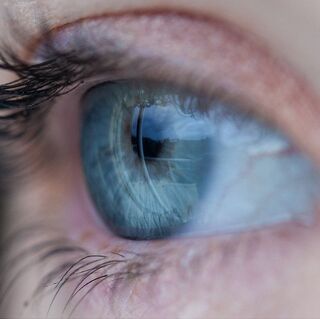Hypnosis
21 Myths About Hypnosis
A recent journal article debunks common misconceptions about hypnosis.
Posted February 2, 2021 Reviewed by Abigail Fagan

Misrepresentations of hypnosis seem to pervade television shows and movies.
For instance, they suggest hypnosis produces an unusual state of consciousness (trance) associated with loss of willpower and self-control. The Manchurian Candidate, Dead Again, and The Curse of the Jade Scorpion are some examples of movies that suggest hypnosis induces a trance and compels individuals to steal, kill, or regress to past lives. Similarly, movies sometimes suggest hypnosis is a quick fix for weight loss, better sleep, building self-confidence, and so forth.
Given these hypnosis myths, it is not surprising that many people are afraid of being hypnotized. But a recent paper—by Lynn et al., from Binghamton University (SUNY), Harvard Medical School, Goldsmiths (University of London), and Ohio State University—published in the December 2020 issue of Applied Cognitive Psychology, dispels 21 such hypnosis myths.
1. Hypnosis is useless; or, alternatively, a quick fix.
Hypnosis is not helpful for everyone; nor is it a quick fix. However, previous research has found hypnosis to be beneficial in the treatment of numerous health conditions: Pain, anxiety, depression, post-traumatic stress disorder (PTSD), irritable bowel syndrome (IBS), obesity, psychosomatic conditions, chemotherapy-related nausea and vomiting, and others.
2. Hypnosis is a stand-alone intervention.
Hypnosis is often used as an adjunct to other techniques, like medications, psychodynamic therapy, and especially cognitive behavioral therapy (CBT).
3. One is either hypnotizable or not hypnotizable at all.
Positive response to hypnotic suggestions is often called hypnotizability, which some assume is an “unvarying ‘trance’ state with universally shared properties that is either present or absent.” That is not true. For instance, even those with a high degree of hypnotic suggestibility respond to some suggestions but not others.
4. Hypnotic and non-hypnotic suggestibility are fundamentally different.
The tendency to respond to suggestions (i.e. to experience one’s responses as involuntary) is called suggestibility. Trance is not required for response to a type of suggestion called imaginative suggestion (used in hypnosis). This means hypnotic and non-hypnotic suggestibility are not significantly different.
5. Hypnosis greatly increases suggestion responsiveness.
The increase in suggestibility during hypnosis is very small. What the hypnosis scales assess, Lynn and co-authors note, is the responsiveness to suggestions usually used in hypnosis, “regardless of whether one receives a hypnotic induction or not.”
6. Hypnotizable individuals slip into a trance.
Some writers have proposed “hypnotizable” individuals slip into a trance spontaneously (meaning without receiving hypnotic inductions). Yet, most of these writers have not clearly defined what this hypnotic trance is, often depending on people’s self-report of having experienced hypnotic trance.
7. A “hypnotic trait” correlates strongly with hypnotic suggestibility.
Research has not found personality traits strongly correlated with hypnotic responsiveness, except for ones overlapping with the concept of hypnosis itself—traits like fantasy proneness and absorption (e.g., tendency to become immersed in movies).
8. Responsiveness indicates only faking or compliance.
Though compliance may play a role in responsiveness, imaging studies show evidence of the activation of brain areas related to the suggested events (e.g., visual areas activated in visual hallucinations), indicating hypnotic responses are real.
9. It is impossible to alter hypnotic suggestibility.
According to research findings, after receiving training (e.g., to increase positive expectancies and motivation), many low-suggestible individuals become categorized as high-suggestible.
10. Hypnotists need to be highly skilled to produce great responsiveness.
The image of the hypnotist as a magician who can hypnotize any random person is a myth. Hypnosis requires only the ability to administer procedures and basic social skills (e.g., to establish rapport).
11. The effectiveness of hypnotic inductions varies significantly.
No major differences between hypnotic inductions have been found.
12. Peripheral awareness is significantly reduced during hypnosis.
This myth is reinforced by the American Psychological Association’s definition of hypnosis, which says hypnosis is a “state of consciousness involving focused attention and reduced peripheral awareness characterized by an enhanced capacity for response to suggestion.” Yet, available data suggest peripheral awareness is not strongly reduced during hypnosis (and certainly not due to trance).
13. Focused attention is key to an effective hypnotic response.
Focused attention on a particular idea and inhibiting all else is not essential to the hypnotic response.
14. The effects of hypnosis are due to relaxation.
Hypnotic effects are not due to relaxation because even, say, exercise-related hypnotic inductions have been achieved and found as effective as relaxation-based hypnotic inductions.
15. Hypnotic states resemble sleep.
Though fatigued participants sometimes fall asleep after some suggestions (e.g., “Close your eyes”), participants are awake and aware of their environment during hypnosis.
16. Hypnotic states resemble mindfulness.
While both can be associated with suggestion and relaxation, “hypnosis steers spontaneous mental activity toward suggested events,” while mindfulness requires metacognitive skills and “observation of spontaneous thoughts and emotions with an accepting, nonjudgmental attitude.” Indeed, more suggestible people are often less mindful.

17. Good markers of the hypnotic state have been identified.
No reliable markers (e.g., eye movements, neural mechanisms) of trance states have been found.
18. The involuntariness experienced during hypnosis is due to a trance.
The perception of involuntariness, the authors explain, is simply a “characteristic of response to suggestion.” It is a “byproduct of the fact that many everyday intentional behaviors are initiated automatically,” and assumptions regarding the involuntariness of hypnotic responses.
19. One cannot resist hypnotic suggestions.
A hypnotized person is not like a robot who will do whatever the hypnotist orders. The experience of involuntariness is not related to the presence of a trance but expectations about whether one will have voluntary control when hypnotized.
20. Hypnosis can reliably improve memories of recent events.
Although hypnosis may increase accurate memories, it also increases false memories.
21. Hypnotic age regression helps recover distant memories.
As for the hypnosis myths regarding age regression (e.g., childhood memories) or past life regression (e.g., incarnations), despite what people like Dr. Brian Weiss or the guests on the Dr. Oz show may have claimed, research has failed to support the accuracy of these memories.
Facebook/LinkedIn image: LightField Studios/Shutterstock




